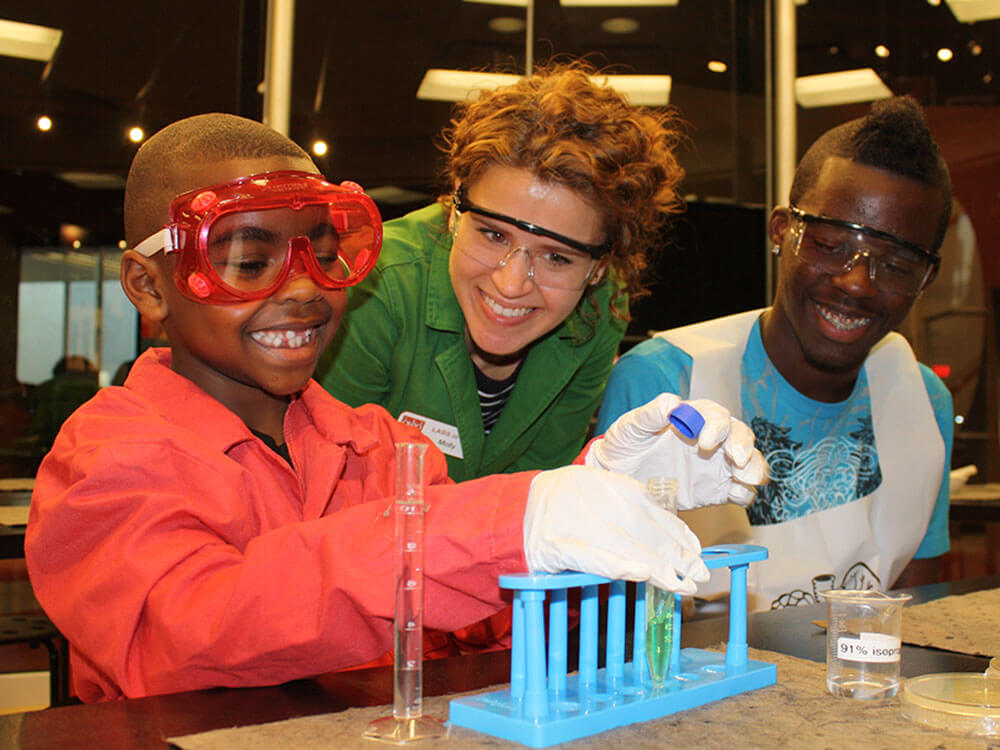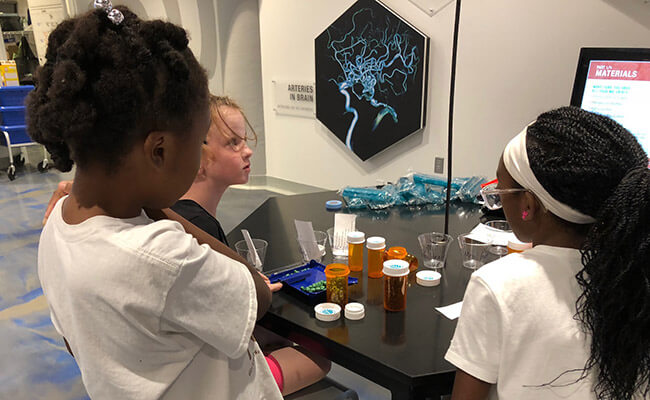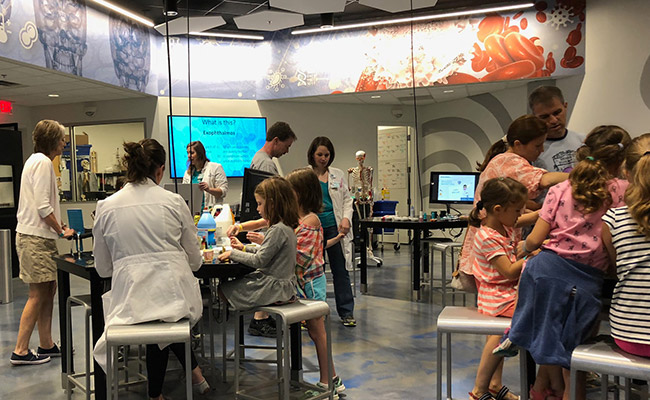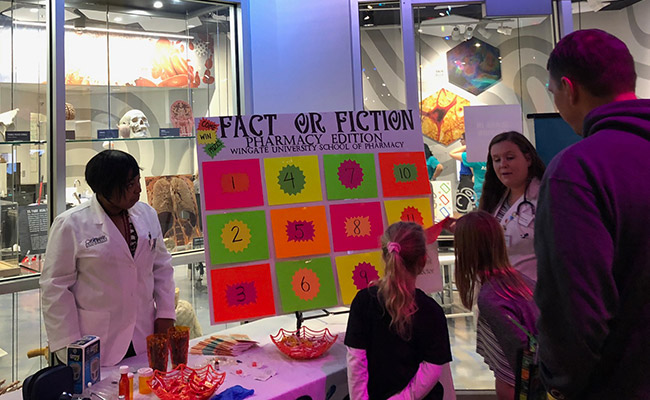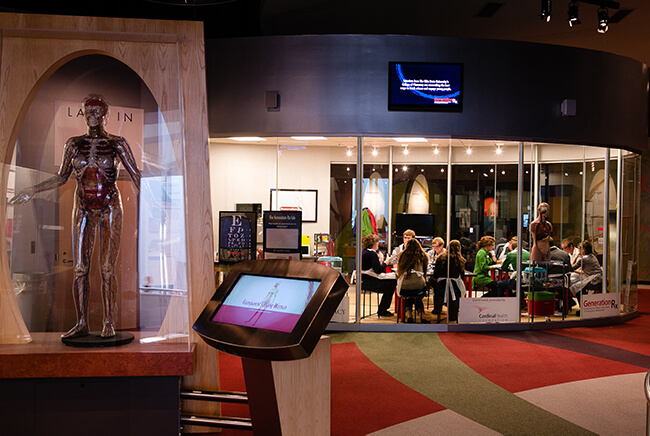Museum exhibits improve social pharmacy skills of college students, ignite public knowledge and allow all ages to explore pharmacy up close.
By Athena Ponushis
Schools of pharmacy are partnering with museums to put pharmacy on display and educate the public about the science behind pharmacy. Such exhibits are exposing younger students to science and engaging them in the scientific process. They are also honing the communication skills of the college students who cultivate them, as they learn to translate their knowledge into a language that people can understand.
Museums are creative by nature, and partnering with them has given schools another way to mobilize students to lead outreach activities and exercise their own creativity. Museum visitors have been intrigued and student pharmacists have been grateful for the practice.
“Who would have thought that as a pharmacy student you could learn how to talk about science at a museum? That’s a little unconventional, but it’s a great platform for the profession—to build advocates for pharmacy and show how safe medication usage can promote healthy lifestyles,” said Dr. Nicole Kwiek, assistant dean of undergraduate studies and director of Generation Rx at The Ohio State University College of Pharmacy. “Kids of all ages understand what medicines are, they get the context immediately, but it helps to get them thinking about safe medication-taking practices and teach them, ‘Who is a pharmacist? Why is a pharmacist important? How can I talk with a pharmacist?’ With this museum partnership, we can start to instill these ideas at a very young age.”
Hands-On Learning
The Generation Rx Lab, an active drug education and research space, sits in a glass pod within the Labs in Life exhibit at the Center of Science and Industry (COSI) in Columbus, Ohio. Every day museum-goers come in and put on lab coats, white or tie-dyed, and wear stethoscopes around their necks and solve medicinal questions. The lab is staffed by Dr. Cynthia Canan, a postdoctoral fellow, and OSU student pharmacists who are enrolled in a science communication course or are on APPE rotation. Together, the team develops educational experiments for museum visitors to conduct during their visit, exposing them to the science behind drug action. Students lead the hands-on experiments, with a main attraction being Bob the Abra Cadaver, a medical robot that looks like a human patient.
Bob talks, he blinks, he breathes, he has a pulse and his pupils dilate. You can measure his vitals and put him in a medical crisis. Inconspicuous lab staff control Bob’s medical states from a computer off to the side. Visitors approach Bob much like they would a patient in grand rounds. Young children think of questions to ask Bob about how he’s feeling. Bob may say, “I have a headache. I ate some peanuts at a birthday party and I didn’t know it and now I feel a little woozy.” Guests start collecting data, writing on the lab’s glass walls. The student puts Bob in a more emergent situation. He goes into anaphylactic shock. The team agrees on a drug therapy and gives him an epinephrine shot. Then they talk about why the allergy attack happened and how the drug helped Bob.
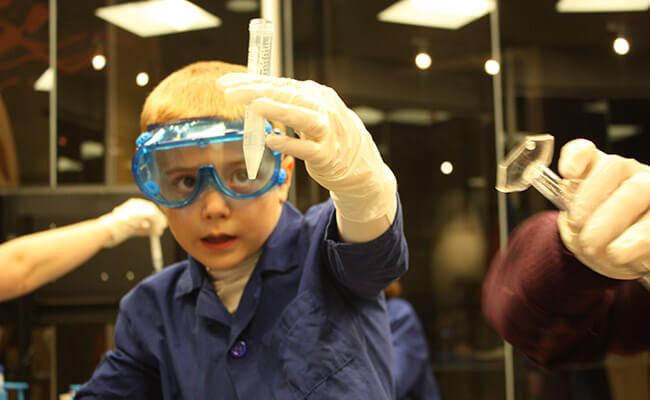
The OSU College of Pharmacy started the Generation Rx Initiative in 2007 to address the problem of medication misuse and promote awareness of safe medication-taking practices. Partnering with and receiving funding from the Cardinal Health Foundation in 2009, the project has now grown to involve 120 schools of pharmacy with more than 60,000 students taking the message into their communities. Kwiek believes the initiative has been successful because it hits right at the heart of pharmacy while harnessing the students’ energy.
Brainstorming innovative ways to spread the message, Kwiek had the idea: “Wouldn’t it be great if we could showcase drug science in a museum setting?” Her research had shown that people found pharmacology topics to be captivating. In her postdoctoral work, she saw that high school students connect better with science topics when the science is introduced with a pharmacology spin, like learning a redox reaction not through rust but by learning how methamphetamines kill neurons. And she knew Columbus had an amazing science museum in COSI. Pharmacology may be a discipline that is normally taught at the post-baccalaureate level, but her thought was, “If we could find a way to take this content, distill it down and get it to the general public, to the children, parents and grandparents visiting COSI, then we could have them doing hands-on science, real experiments, learning basic scientific concepts and connecting it back to safe medication-taking practices.”
COSI visitors are now saving Bob seven days a week. Since 2012, COSI guests have been conducting experiments, like isolating their DNA, putting it in a vial and walking away with it, or crafting and testing their own hand sanitizer and testing it out by pressing their hands on petri dishes before and after they use it—all the while learning the science that underlies medicines.

